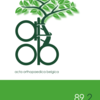The role of sonication in the diagnosis of periprosthetic joint infection in total shoulder arthroplasty
Total shoulder arthroplasty, periprosthetic joint infection, sonication, cutibacterium acnes
Published online: Aug 12 2023
Abstract
An increased sensitivity of sonication compared to periprosthetic tissue cultures in the diagnosis of periprosthetic joint infection (PJI) of hip and knee arthroplasty has been reported. The goal of this study was to determine if there is also an added value of implant sonication in the diagnosis of PJI in total shoulder arthroplasty (TSA). A retrospective analysis of patients who underwent removal of their TSA combined with sonication of the implant for suspicion of PJI between April 2009 and August 2017 was performed. The diagnosis of PJI was based on the major criteria described by Parvizi. We calculated sensitivity, specificity, predictive values, likelihood ratios and diagnostic accuracy for sonication cultures in comparison with periprosthetic tissue cultures. Data from 41 patients were analysed. Standard synovial fluid cultures combined with intraoperative periprosthetic tissue cultures had a sensitivity of 95%, specificity of 95% and total accu- racy of 95%. Sonication cultures had a sensitivity of 91%, specificity of 68% and total accuracy of 80%. Six patients had negative standard cultures but positive sonication cultures. In patients with only one positive standard culture, the pathogen of the sonication culture corresponded to the pathogen of the positive soft tissue culture. We found a possible added value of sonication of TSA in the diagnosis of PJI in conjunction with standard intraoperative cultures. In some patients with suspicion of low-grade TSA infection, sonication could identify a possible causal microorganism despite negative standard cultures.
